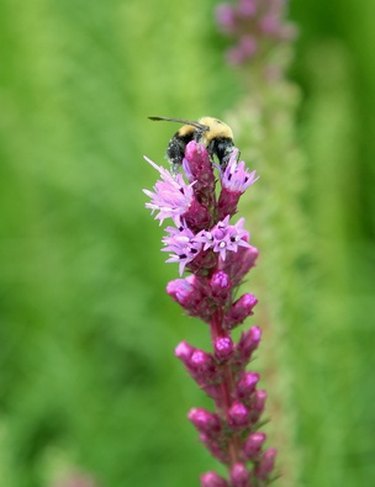
Pollination is the reason plant species are able to survive from generation to generation. Whether carried by insects, birds, animals or wind, pollen makes its way from the male flowers to the female flowers to begin the reproduction process. But this movement is only the beginning. After pollination there is a flurry of activity that leads to the production of a new plant.
Fertilization
Video of the Day
Flowers attract insects and birds or else rely on the wind or another medium to take the male gametes in the form of pollen from the male flower to the female flower and deposit it on a section of the flower known as the stigma. The stigma receives the bits of pollen and transports the pollen to the ovules of the female plant through a tube called the style. Depending on the species of the plant, this pollination may require the pollinator to travel a considerable distance, or it could only have to travel a very short distance in an instance where a single plant has both male and female parts, a common occurrence in the plant world.
Video of the Day
Ovules to Seeds
Once the pollen moves down the style, it reaches the ovules, which are tiny organisms similar to the eggs in the human female's ovaries that require sperm to fertilize them and produce new embryos. The pollen fertilizes the ovules to create seeds that will eventually be used to propagate the species.
Ovary Expands to Fruit
After fertilization, the ovules begin to grow into seeds while the ovary, the area of the plant that holds the seeds, begins to expand. This expansion results in the formation of a fruit. Fruits can range from berries to nuts, including the types of fruits humans consume. The purpose of the fruit is to be a vehicle for the seeds to travel to a new planting spot.
Fruit Falls
Seeds that humans use for planting come from the inside of a fruit. But since plants cannot rely on others to plant their seeds, the plants have a process that will allow them to finish reproduction on their own.
An unpicked fruit stays on the tree until it begins to decay. Eventually the fruit will fall from the tree, hitting the ground and continuing to decay until the flesh and outer skin of the fruit decompose. Among of the remaining parts of the fruit are the seeds contained within it. These seeds can then effectively use the natural elements of rain, the decaying fruit matter and the soil beneath them to sprout into a new plant and continue the life cycle.